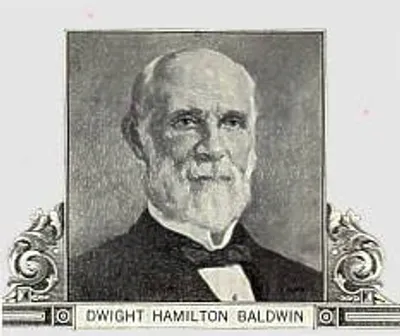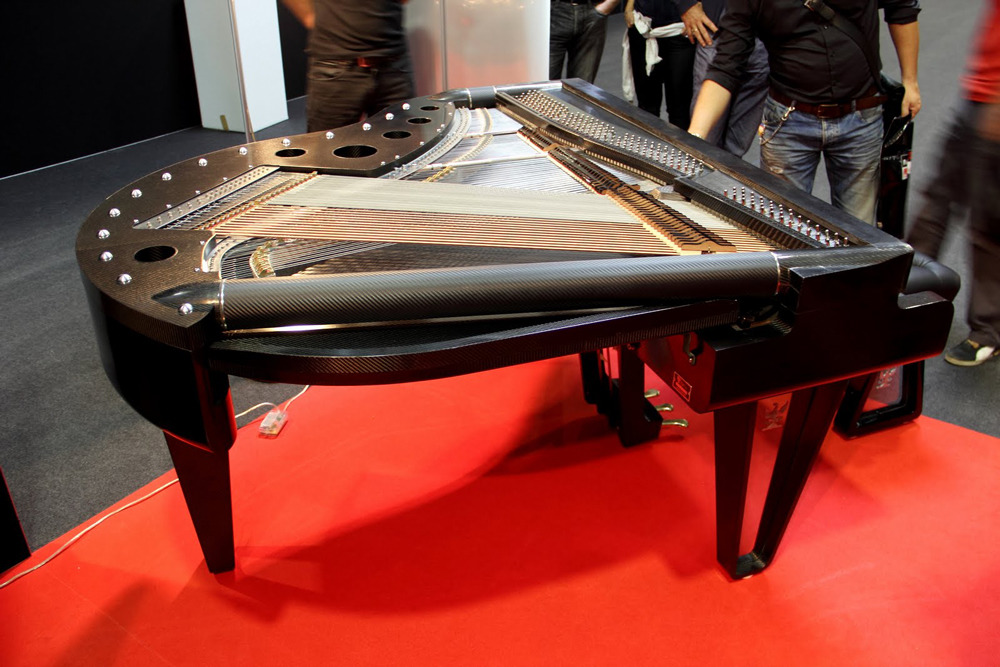 What do Béla Bartók, Igor Stravinsky, Aaron Copland, Liberace, Dave Brubeck and various other performers, ensembles and composers have in common? They all preferred the rich sound of the Baldwin Piano. Dwight Hamilton Baldwin (1821-1899) originally hailed from northwestern Pennsylvania, but made his money teaching voice and violin in the Cincinnati school system. He soon rose to prominence in local musical circles, and was consulted on purchasing pianos and reed organs. By 1865 Baldwin produced first formal advertisement as an instrument dealer, offering Chickering pianos for sale. The company soon became the largest piano and reed organ dealer in the western states, carrying instruments from Steinway and the Estey Organ Company. But Baldwin and his designer John Warren Macy had even bigger plans. They established two companies, and the Baldwin branch designed a grand piano as well as a moderately priced upright, with production starting in 1893.
What do Béla Bartók, Igor Stravinsky, Aaron Copland, Liberace, Dave Brubeck and various other performers, ensembles and composers have in common? They all preferred the rich sound of the Baldwin Piano. Dwight Hamilton Baldwin (1821-1899) originally hailed from northwestern Pennsylvania, but made his money teaching voice and violin in the Cincinnati school system. He soon rose to prominence in local musical circles, and was consulted on purchasing pianos and reed organs. By 1865 Baldwin produced first formal advertisement as an instrument dealer, offering Chickering pianos for sale. The company soon became the largest piano and reed organ dealer in the western states, carrying instruments from Steinway and the Estey Organ Company. But Baldwin and his designer John Warren Macy had even bigger plans. They established two companies, and the Baldwin branch designed a grand piano as well as a moderately priced upright, with production starting in 1893.

Dwight Hamilton Baldwin © Baldwin Music Education Center
Baldwin vowed to “build the best piano that could be built,” and his efforts were rewarded at the Paris Exposition of 1900, where the instrument won the “Grand Prix,” the first American manufactured piano to win such an award. Additional awards in St. Louis and London soon followed, and by 1913, the company was exporting to 32 countries with retail dealerships located throughout the United States. To showcase their wares, the firm expanded its retail store in New York City, which included a concert hall seating 400 and a recital hall accommodating 150. Similar to other manufactures at the time, Baldwin began to produce player pianos, cleverly advertising them “as a source of wholesome pleasure that can access the entire world of music.” Baldwin actually had patented a mechanism called the “air finger,” that was actually controlled by the performer’s feet. As such, Baldwin had created “an instrument that would play in sympathy with the musical feeling as expressed through the pedaling.”
Like any other instrument manufacturer, Baldwin relied heavily on artist endorsements. Igor Stravinsky somewhat guardedly wrote, “I am sincerely happy to use the Baldwin in my varied activities,” while Lily Pon more enthusiastically suggested, “The Baldwin’s tonal qualities make it a noble instrument with which to sing in genuine satisfaction.” And Walter Gieseking wrote, “Baldwin has the most beautiful tone I have ever found in a piano.” Baldwin frequently appeared at important events, such as the April 1927 Carnegie Hall presentation of George Antheil’s Ballet Mécanique featuring 16 Baldwin instruments. And when Leopold Stokowski conducted Stravinsky’s Les Noces, he insisted on featuring four Baldwin pianos. Presidents Taft, Harding and Collidge designated the Baldwin the official piano of the White House, and the famed humorist Will Rogers declared, “The Baldwin is the best piano I ever leaned on.”
Frédéric Chopin: Ballade No. 4 in F Minor, Op. 52 (The 1981 Baldwin Recordings by Earl Wild)
To keep abreast with technical and scientific innovations, Baldwin undertook pioneering sound-production research at the Physics Department at the University of Cincinnati. However, these studies were interrupted in 1941 when the company’s facilities were used to produce airplane wings and fuselage parts for the war effort. Reciprocally, the company developed new veneering techniques, which subsequently became the basis for improved piano construction and greater tuning stability. With the continued production of pianos soon after the war, Baldwin also added a line of electronic organs for home and church use. The company also ventured into the world of popular music, but was not successful in its acquisition attempt of the Fender Guitar Company. In 1964, new leadership abandoned reliance on the manufacture and sale of musical instruments and aggressively moved toward the acquisition of financial services companies with the predictable result that Baldwin declared bankruptcy in 1983. A newly organized Baldwin Piano and Organ Company emerged in 1986, but had to be sold once more in 1993. New bankruptcy proceedings were initiated in 2001, and the Gibson Guitar Corporation bought the company. Domestic piano production ceased in December 2008, with all current instruments manufactured in China.
For more of the best in classical music, sign up to our E-Newsletter







Thank you for the article. Warm memories rekindled of Earl Wild, Stewart Cole, Jack Romann, who mentored my early career beginnings: I was to the sole piano technician for the 1981 Ivory Classics Baldwin recording linked above, I was technician for all that series of recordings, made at University of Miami Gusman Concert Hall by engineer Peter McGrath and producer (supervised by Michael Davis) Julian Kreeger.
As I re-enter the field of concert piano preparation today in early 2018 after early retirement 22 years ago, finding by chance this series of piano history articles, am astonished to find echoes from my former life in Mr. Predota’s example of the Baldwin; the great Earl Wild presented center stage for his purpose of perfection withal, he who plays for futurity.